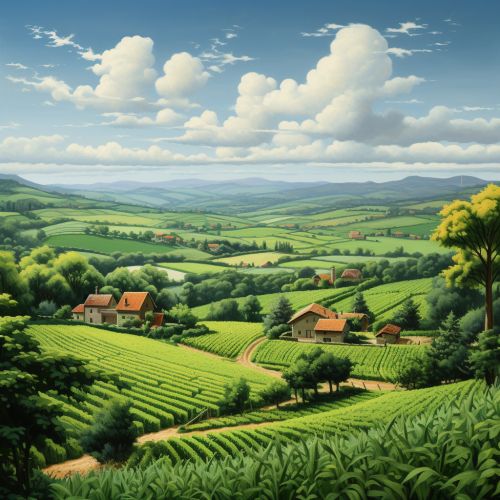Cultural Landscape
Definition
A Cultural Landscape is a geographic area, including both cultural and natural resources and the wildlife or domestic animals therein, associated with a historic event, activity, or person or exhibiting other cultural or aesthetic values. The concept emerged in the early 20th century in the field of geography and was later adopted by other disciplines such as anthropology, archaeology, and historic preservation.


Types of Cultural Landscapes
The National Park Service in the United States recognizes four general types of cultural landscapes, although not mutually exclusive: historic designed landscapes, historic vernacular landscapes, historic sites, and ethnographic landscapes.
Historic Designed Landscapes
Historic designed landscapes are those that were consciously designed or laid out by a landscape architect, master gardener, architect, or horticulturist according to design principles, or an amateur gardener working in a recognized style or tradition. The landscape design is usually documented in plans, sketches, plats, or other written records.
Historic Vernacular Landscapes
Historic vernacular landscapes are those that evolved through use by the people whose activities or occupancy shaped them. These landscapes reflect the physical, biological, and cultural character of everyday lives. Farmsteads, rural villages, and maritime landscapes are representative examples of this landscape type.
Historic Sites
Historic sites are landscapes significant for their association with a historic event, activity, or person. Examples include battlefields, archaeological sites, and landscapes associated with a person or group.
Ethnographic Landscapes
Ethnographic landscapes are those associated with a particular group or culture that subscribes to traditional ways of using the land and natural resources. Often, these landscapes are of spiritual or religious significance.
Preservation and Management
The preservation and management of cultural landscapes require a comprehensive understanding of the property, including its historic context, significance, and physical characteristics. The goal of cultural landscape preservation is not to maintain a landscape at one point in time, but to manage change to retain the landscape's physical and historic character.
Cultural Landscape and Identity
Cultural landscapes provide a sense of place and identity; they map our relationship with the land over time. They are illustrative of the diversity of interactions between humans and their environment. Cultural landscapes are a reflection of social, cultural, and historical processes.
Cultural Landscape and Sustainable Development
Cultural landscapes can also contribute to sustainable development. They are a resource that can provide economic benefits, through tourism for example, while also contributing to social cohesion and sustainable use of physical resources.
